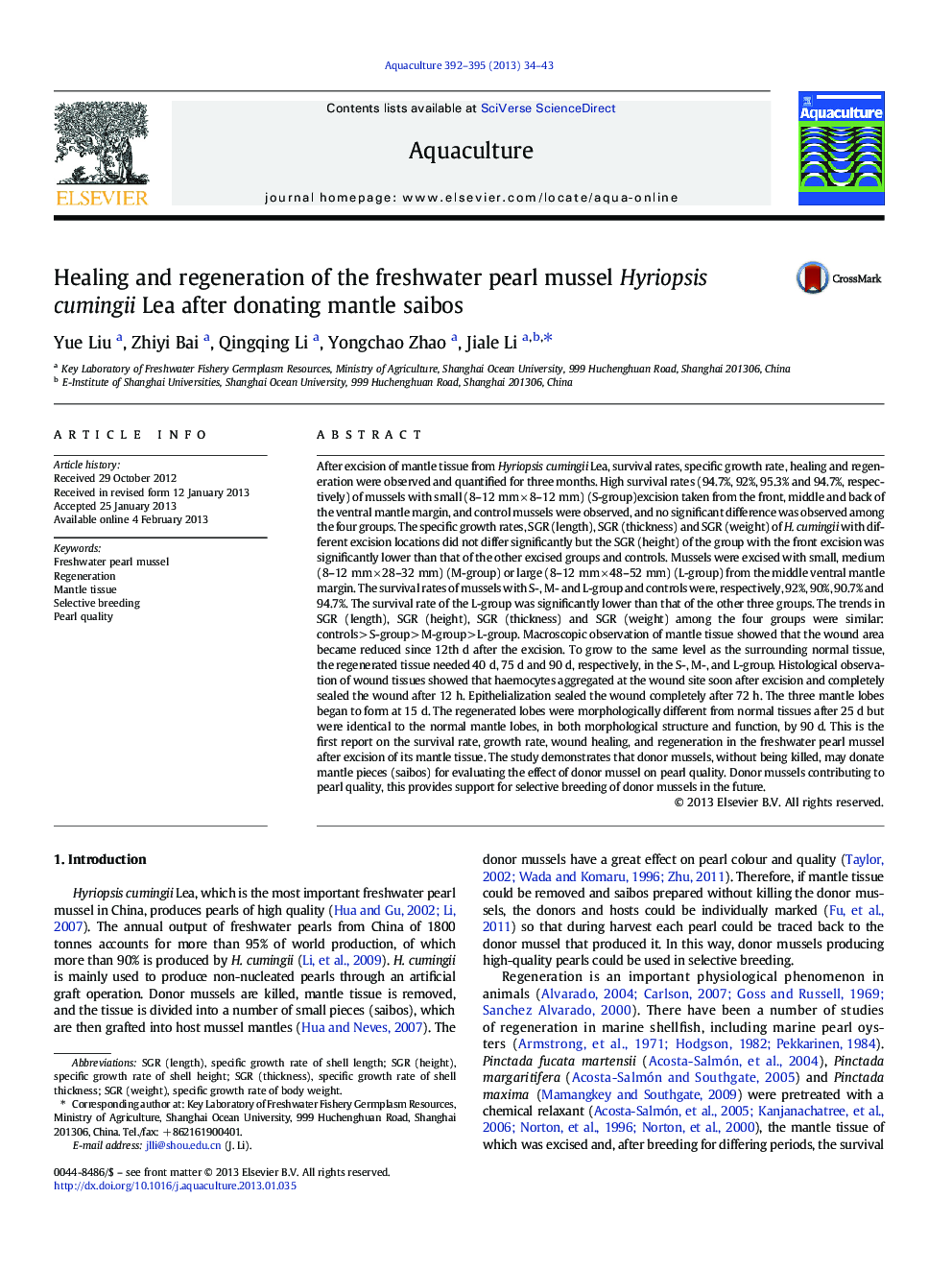| کد مقاله | کد نشریه | سال انتشار | مقاله انگلیسی | نسخه تمام متن |
|---|---|---|---|---|
| 2422190 | 1552875 | 2013 | 10 صفحه PDF | دانلود رایگان |

After excision of mantle tissue from Hyriopsis cumingii Lea, survival rates, specific growth rate, healing and regeneration were observed and quantified for three months. High survival rates (94.7%, 92%, 95.3% and 94.7%, respectively) of mussels with small (8–12 mm × 8–12 mm) (S-group)excision taken from the front, middle and back of the ventral mantle margin, and control mussels were observed, and no significant difference was observed among the four groups. The specific growth rates, SGR (length), SGR (thickness) and SGR (weight) of H. cumingii with different excision locations did not differ significantly but the SGR (height) of the group with the front excision was significantly lower than that of the other excised groups and controls. Mussels were excised with small, medium (8–12 mm × 28–32 mm) (M-group) or large (8–12 mm × 48–52 mm) (L-group) from the middle ventral mantle margin. The survival rates of mussels with S-, M- and L-group and controls were, respectively, 92%, 90%, 90.7% and 94.7%. The survival rate of the L-group was significantly lower than that of the other three groups. The trends in SGR (length), SGR (height), SGR (thickness) and SGR (weight) among the four groups were similar: controls > S-group > M-group > L-group. Macroscopic observation of mantle tissue showed that the wound area became reduced since 12th d after the excision. To grow to the same level as the surrounding normal tissue, the regenerated tissue needed 40 d, 75 d and 90 d, respectively, in the S-, M-, and L-group. Histological observation of wound tissues showed that haemocytes aggregated at the wound site soon after excision and completely sealed the wound after 12 h. Epithelialization sealed the wound completely after 72 h. The three mantle lobes began to form at 15 d. The regenerated lobes were morphologically different from normal tissues after 25 d but were identical to the normal mantle lobes, in both morphological structure and function, by 90 d. This is the first report on the survival rate, growth rate, wound healing, and regeneration in the freshwater pearl mussel after excision of its mantle tissue. The study demonstrates that donor mussels, without being killed, may donate mantle pieces (saibos) for evaluating the effect of donor mussel on pearl quality. Donor mussels contributing to pearl quality, this provides support for selective breeding of donor mussels in the future.
► H. cumingii could survive for a long time after excising a part of mantle tissue.
► The excision sizes and locations have effect on the mussel's survival & growth rate.
► The healing & regeneration of mantle tissue have been observed.
► Some new structures in histological observation were reported.
► This study provides support for selective breeding of donor mussels.
Journal: Aquaculture - Volumes 392–395, 10 May 2013, Pages 34–43